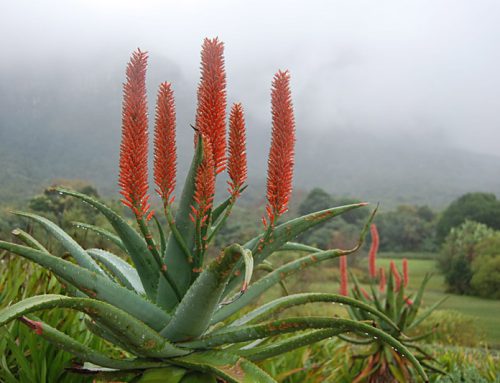 An onion is a lovely thing,” he told me, freshly plucked onion in hand. He was a farm labourer and he was heading back to his cottage on the farm to make a stew for his evening meal.
An onion is a lovely thing,” he told me, freshly plucked onion in hand. He was a farm labourer and he was heading back to his cottage on the farm to make a stew for his evening meal.
I have never forgotten what he said about the onion, and I now repeat it in the name of a close relative of the onion: our indigenous wild garlic.
Wild garlic is a lovely thing: lovely to look at when it flowers, lovely to use for cooking, and extremely useful from a medicinal point of view.
The only aspect of it that is not lovely is its affect on the breath, especially the morning after a wild garlic-laced meal.
South Africa has three main wild garlic species: Tulbaghia simmleri, Tulbaghia violacea and Tulbaghia alliacea. They were named after Ryk Tulbagh, the Dutch governor of the Cape from 1751 to 1771, who sent many indigenous South African plants to the father of botany, Carl Linnaeus, so that he could classify them.
Linnaeus was a physician and a botanist with the breadth of imagination to map the grand scale of being by originating a comprehensive binomial classification system for all living things. Centuries later, his system continues to guide our present day understanding of species and their interrelation.
And so it was that Linnaeus received samples of our three different wild garlic plants in a package shipped from South Africa to Sweden. He well knew the plant, for Europe has its own wild garlic species, widely used in cooking and as medicine.
In South Africa the species with the best medicinal record is Tulbaghia alliacea, as it was a popular Cape Dutch remedy used to treat fever, fits, rheumatism and paralysis. But the best-known wild garlic species are Tulbaghia violacea (known as isihaqa in Zulu) and Tulbaghia simmleri, both of which are commonly cultivated in South African gardens. Medicinally these two species are interchangeable and traditionally used to treat fevers, colds, asthma and tuberculosis, as well as to lower blood cholesterol.
Wild garlic appears to share similar anti-bacterial and anti-fungal qualities as cultivated garlic. A hardy, drought-resistant plant, wild garlic requires little attention once settled in your garden. It self-seeds if left to its own devices. The flowers form seedpods which are also very easy to propagate. As the plant grows, the larger clumps can also be divided.
In permaculture, wild garlic is planted between vegetable crops to repel aphids and other pests. In rural KwaZulu-Natal, it is planted around homesteads as a protection against snakes, and men use the root of the plant as a love charm to attract women. If you consider that wild garlic, especially Tulbaghia alliacea, is 10 times as strong as cultivated garlic, it is a powerful love charm. Perhaps this is the real reason why the world’s favourite chef, Jamie Oliver, adds wild garlic’s European counterpart, Allium ursinum, to several of his dishes.
Allium ursinum, also known as wood garlic or bear’s garlic, is so named because of the brown bear’s taste for the bulbs and habit of digging up the ground to get at them. The bulbs are also a favourite of wild boar.
A quick web search soon produces several recipes for wild garlic, all of them delicious. As with all plants, make sure that you know exactly which species you are using for cooking or medicinal purposes, as many plants have similar looking counterparts that are poisonous.
Wild garlic can be added to butter, pesto, bread and mashed potato, or it can be used to stuff tomatoes. Here’s a simple wild garlic pesto recipe that’s guaranteed to add potency to your breath and your love life:
Roughly chop a handful of washed wild garlic leaves, peel and crush a wild garlic clove. Blend everything in a food processor together with 100ml olive oil and 50g pine nuts. Add 50g grated Parmesan, a tablespoon of lemon juice and sea salt and milled black pepper to taste. Serve once blended or spoon into a jar and refrigerate until needed. Add a little more oil if you prefer a thinner mixture. Tasty with pasta or on bread.




